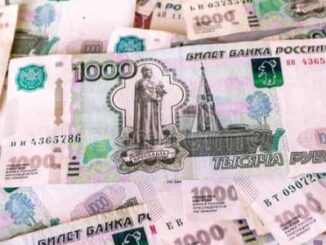
The global oil markets are entering a period of heightened uncertainty following the European Union’s decision to trigger “snapback” sanctions on Iran. On September 27, 2025, France, Britain, and Germany activated this mechanism under the 2015 Joint Comprehensive Plan of Action (JCPOA), reimposing sweeping United Nations sanctions that had been lifted as part of the nuclear deal.
This Friday, Stu Turley, David Blackmon, and Josh Young will be live covering the oil markets from the Energy News Beat Podcast and the Energy Impacts Podcast live on YouTube, X, and LinkedIn. You will be able to ask the panel your questions. Here is the YouTube Link.
These measures, which went into effect immediately, include asset freezes, travel bans on Iranian officials and entities, and authorizations for countries to inspect Iranian cargo, including oil tankers. The move comes amid accusations that Iran has violated the JCPOA by enriching uranium to 60% purity—close to weapons-grade levels—and accumulating enough highly enriched uranium for several nuclear bombs if weaponized. Iran has also barred international inspectors from its sites, exacerbating tensions.
This escalation is not isolated; it intersects with broader geopolitical disruptions, including Iran’s efforts to bypass sanctions through new infrastructure, ongoing Ukrainian drone strikes on Russian oil facilities, and persistent inflationary pressures. Below, we break down the key elements and their potential ripple effects on oil supply, prices, and investor opportunities.
The Snapback Sanctions: Mechanisms and Immediate Effects
The snapback mechanism was embedded in the JCPOA to allow for the rapid reimposition of pre-2015 U.N. sanctions if Iran failed to comply with nuclear restrictions. Originally set to expire in October 2025, the deadline was advanced after Europe accused Iran of non-compliance, including after U.S. and Israeli strikes on Iranian facilities in June 2025.
Russia and China, Iran’s key allies, attempted to delay the sanctions by six months but were outvoted in the U.N. Security Council. For Iran’s economy, already battered by 40% annual inflation, chronic power and water shortages, and a rapidly devaluing rial (which dropped 4% to 1,126,000 per U.S. dollar on the black market immediately after the announcement), these sanctions compound existing woes.
Small and medium-sized businesses anticipate further declines in demand, while procurement, insurance, banking, and shipping face new hurdles.On the oil front, the sanctions directly target exports by empowering inspections of tankers. Iran, which relies heavily on China as its primary buyer (often at a 20% discount to market prices), could see increased risks for buyers, potentially leading to demands for even steeper discounts or reduced volumes.
However, Iran’s Oil Minister Mohsen Paknejad has downplayed the impact, stating that years of sanctions have honed Tehran’s expertise in evasion tactics.
Russia and China have signaled they may ignore the sanctions, continuing trade and military cooperation, such as Iran’s drone supplies to Russia for use in Ukraine.
Iran’s Bypass Strategy: The New Iraq-Oman Pipeline Route
In a bid to circumvent these restrictions, Iran is leveraging its close ties with Iraq. Recent developments point to Iraq’s planned oil pipeline to Oman as a potential backdoor for Iranian crude.
This project, outlined in an early 2025 agreement, would connect Iraq’s southern Basra oil fields to Omani ports, creating a new export corridor away from the Strait of Hormuz.
Analysts suggest this could enable Iran to blend its sanctioned oil with Iraqi crude—exploiting shared oilfields, falsified documents, and ship-to-ship transfers—to rebrand it as Iraqi origin and ship it freely.
Such tactics have long been used, but the pipeline could scale them up, providing Iran with a more efficient evasion route amid tightened U.S. and EU pressures.
The U.S. Treasury has already targeted networks blending Iranian and Iraqi oil, labeling them as smuggling operations.
If successful, this could mitigate some losses from snapback, stabilizing Iran’s exports at around 1.5-2 million barrels per day (bpd) despite sanctions. However, challenges remain: U.S. sanctions have blocked related deals, such as Iraq’s plan to import Turkmen gas via Iran, highlighting Washington’s vigilance.
For global markets, this means Iranian oil might continue flowing covertly, limiting the sanctions’ supply-disrupting potential.Russian Oil Disruptions from Ukrainian Drone StrikesCompounding the Iranian situation are escalating Ukrainian drone attacks on Russian energy infrastructure, which have significantly impaired refining and export capabilities. As of September 2025, these strikes have idled approximately 17% of Russia’s refining capacity—equating to about 1.1 million bpd offline.
Crude throughput has dropped by 400,000 bpd this month alone, with idle capacity hitting a record 3.1 million tons (roughly 700,000 bpd equivalent) due to repeated hits on refineries like those in Kirishi and southern Russia.
While production cuts haven’t been fully implemented, sources indicate Russia is nearing decisions to reduce output, as storage fills up and exports falter.
Diesel exports have plunged to a five-year low, choking off supplies to global markets.
These disruptions, part of Ukraine’s strategy to undermine Russia’s war economy, could remove up to 500,000-1 million bpd from the market if production is curtailed, pushing prices higher.
Inflation Context and Broader Market Dynamics
Global inflationary pressures add another layer. As of August 2025, the U.S. annual inflation rate stands at 2.9%, up from 2.7% in July, with core inflation steady at 3.1%.
The Personal Consumption Expenditures (PCE) index, the Federal Reserve’s preferred gauge, rose 2.7% year-over-year.
Forecasts suggest inflation could climb to 3% by Q4 2025, potentially influencing Fed rate decisions.
Higher inflation could bolster oil demand if economic stimulus follows rate cuts, but it also risks dampening growth if rates stay elevated. In Iran, 40% inflation exacerbates domestic vulnerabilities, potentially forcing more aggressive export discounting.
Are you Paying High Taxes in New Jersey, New York, or California?
Implications for Global Oil Markets and Investors
Collectively, these factors point to tighter supply conditions in the short term. The snapback sanctions could theoretically reduce Iranian exports by 200,000-500,000 bpd if evasion tactics falter, while Russian disruptions might remove a similar or greater volume. This could drive Brent crude prices toward $85-95 per barrel, up from current levels around $75, assuming no major demand shocks.
For investors in oil, the outlook is bullish but volatile:Upside Potential: Supply constraints from Iran and Russia, coupled with steady demand amid moderating inflation, favor upstream producers and ETFs like the United States Oil Fund (USO) or stocks in majors like ExxonMobil (XOM) and Chevron (CVX).
If you are facing high tax obligations this year, investing in private oil opportunities in the United States may be something to talk with your CPA or CFP about now and investigate. At Sandstone, we evaluate between 5 and 8 deals a week, and see how the markets are changing. Getting investments with tax advantages and production checks is a good thing.
Risks: Iran’s bypass successes via Iraq-Oman could flood markets with discounted crude, capping price gains. Escalation in Ukraine or the Middle East might trigger broader conflicts, spiking volatility.
Diversification Advice: Consider hedging with options or focusing on midstream assets (pipelines, storage) less exposed to direct sanctions. Long-term, watch for OPEC+ responses—Russia’s potential cuts align with their quotas, but non-compliance could erode discipline.
In summary, while the EU’s snapback aims to curb Iran’s nuclear ambitions, its oil market impact may be blunted by evasion strategies and allied support. Paired with Russian setbacks, however, it sets the stage for a supply squeeze—offering savvy investors opportunities amid the chaos.
Stay tuned to Energy News Beat for updates on these fast-evolving dynamics.
Avoid Paying Taxes in 2025
Crude Oil, LNG, Jet Fuel price quote
ENB Top News
ENB
Energy Dashboard
ENB Podcast
ENB Substack






Be the first to comment